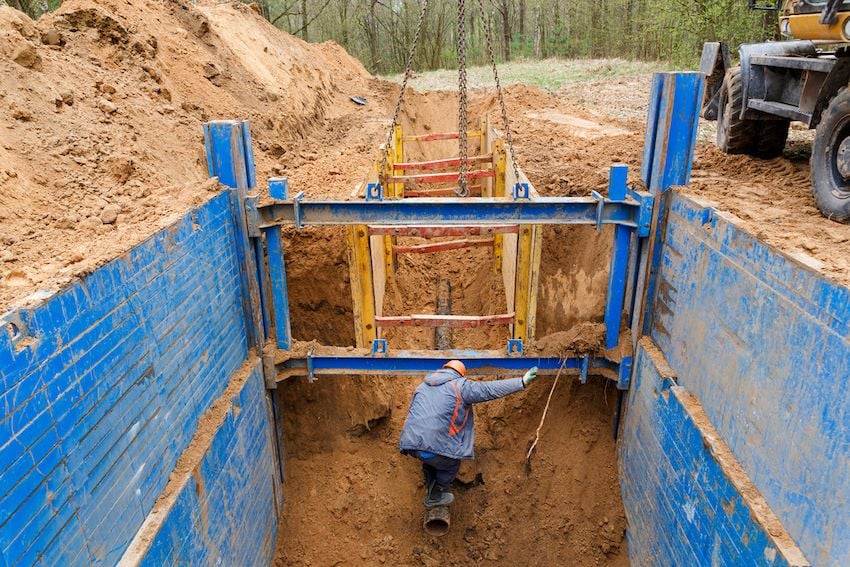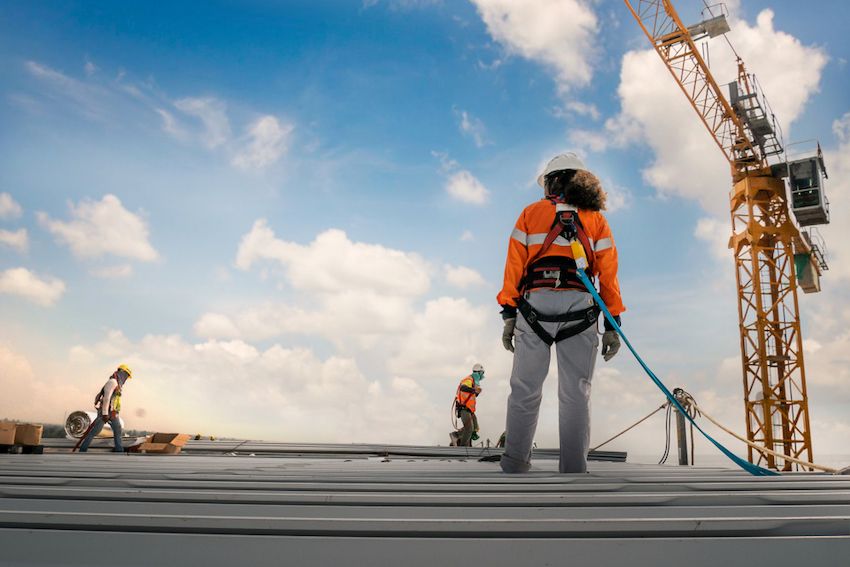The last thing construction supervisors want is for their workers to get hurt on the job. And yet, many safety efforts are reactive, happening only after an incident occurs.
In 2019, private industry employers reported 2.8 million non-fatal workplace injuries and illnesses, according to the Bureau of Labor Statistics (BLS). An additional 5,333 workers tragically died from job-related injuries, according to the BLS.
Taking a proactive approach to worker safety can decrease the frequency and severity of incidents. Read on for tips on how to find and address construction hazards before they become problematic, so you can make your workers safer.
How to be more proactive about worker safety
1. Regularly inspect and replace safety equipment
Personal protective equipment is used to keep your workers safe. However, it isn’t effective if it’s worn out or damaged. The Occupational Safety and Health Administration (OSHA) advises employers to implement a PPE program if workers need to use PPE in their jobs.
The program should address the selection, maintenance, and use of PPE; hazards present; training of employees to use it properly; and continuous monitoring to ensure effectiveness. This is important because, if PPE doesn’t fit properly, it can cause workers to become dangerously exposed to worksite hazards.
Creating a regular schedule for all PPE to be carefully examined and replaced, if necessary, is a must. Workers should also inspect each item before use to ensure proper protection.
2. Talk with field workers to identify safety threats
Construction supervisors can’t be everywhere at once, so it’s possible there are safety threats you don’t know about at field locations. For this reason, it’s important to talk with workers on a regular basis to find out what’s going on in the field. Empower them to speak up if they see something that isn’t right.
Worker safety risk management must be a team effort. Take all complaints seriously and follow up with workers to let them know how issues were addressed. By encouraging people to be your eyes and ears, you’re affirming a strong commitment to safety.
Look: 3 Ways to Improve Utility Worker Safety
3. Hold safety stand downs
If your company doesn’t already do so, holding safety stand downs is an excellent way to be proactive about safety. Hosted by construction, utility, and similar companies, these special events are a time for companies to talk to workers about safety.
To get the most from safety stand downs, you’ll want to choose a safety topic to discuss in advance and decide which workers need to participate. When preparing for the event, review your safety program and materials to identify any potential weaknesses you can improve.
Make the most of this experience by creating presentations or activities for workers. Adding structure will ensure you cover all the bases, whether your stand down is a 15-minute session or hours of training.
Get as many workers as possible to attend by promoting the event via email and flyers. Encourage participation at the stand down and seek feedback afterward to find out what worked and what didn’t.
Related: Why Utilities Should Hold Mental Health Safety Stand Downs
4. Adopt new safety technology
New technological innovations can assist with worker safety initiatives. Investing in tools like safety management software that anticipates worker threats in advance can prevent worker injuries.
Other recent advances in safety technology include lone worker monitoring systems that allow you to track employees working alone, so you can quickly provide assistance if needed, and virtual reality (VR) headsets, which you can use to train workers on challenging or hazardous tasks in a simulated environment before they’re exposed to actual high-risk situations.
5. Make sure all workers are properly trained
Incidents happen when workers don’t receive adequate training to do their jobs. It’s important to thoroughly train new hires, as well as providing ongoing training to seasoned workers, especially when giving them new responsibilities.
Make it easy for workers to receive training by providing it during work hours when possible. If sessions are only available after hours or on weekends, compensate employees for their time.
Ensuring workers are properly trained can prevent life-altering injuries. For example, training workers on proper lifting techniques can help them avoid work-related musculoskeletal disorders, which account for 33 percent of worker injury and illness cases, according to the BLS.
6. Implement a health and safety program
Formalize your efforts by creating a health and safety program. Along with keeping workers safe, OSHA advises this will help your company avoid indirect costs caused by workplace incidents including time lost due to work stoppages; training and other costs to replace injured workers; and loss or damage to material, machinery, and property.
Additionally, when workers are unable to do their jobs because of work-related illness or injury even for a short time, it can damage morale, productivity, turnover, and your company’s reputation. Having a health and safety program sends the message to workers that you’re committed to spotting issues before they arise. This is also a way to build trust and boost communication with workers, and it often produces other business improvements.
Read: Worker Safety Resolutions for Construction and Utility Companies
7. Create a strong safety culture
Be proactive about safety efforts by embedding it in your culture. Employees look to management for guidance, so make sure company leaders aren’t cutting corners or encouraging others to do so.
Make workers feel empowered to report any potential safety issues they see by welcoming this type of feedback. Consistently promoting a proactive approach to safety will weave it into the fibers of your culture, so workers know it’s the top priority.
Watch: How to Create a Safety-First Culture
When employees report to work each shift, they put their safety in your hands. Taking a proactive approach to worker safety shows you understand the magnitude of this responsibility.
Everything from performing a regular safety risk assessment to ensuring employees understand construction hazards and feel comfortable reporting potential issues can make a huge difference. Your workers will feel safer, and you’ll enjoy peace of mind knowing you’re doing everything possible to help them avoid work-related injuries and illnesses.
For more on this topic, check out the blog “How to Prevent Injuries and Fatalities from the Top 4 Construction Hazards.”

